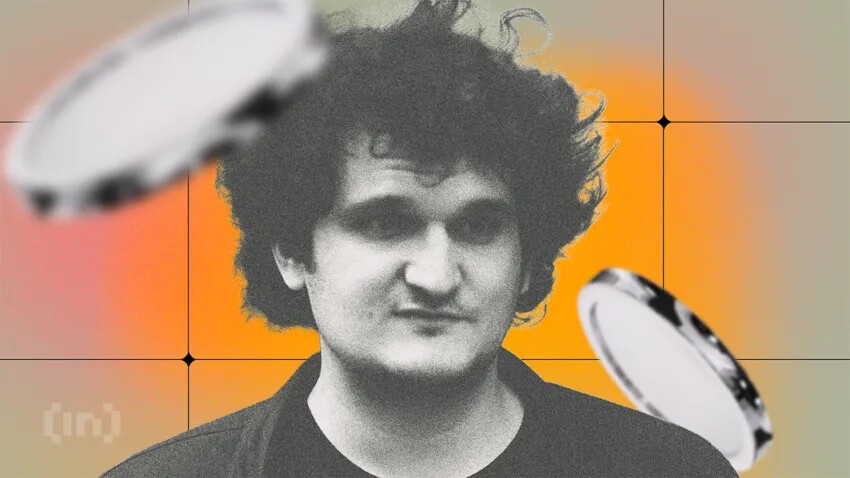Sam Bankman-Fried Appeals Conviction, Says Trial Was Unfair and Biased
Bankrupt FTX founder Sam Bankman-Fried has appealed his fraud conviction, claiming the trial was biased and rushed.
- Convicted FTX founder Sam Bankman-Fried has appealed his fraud conviction, arguing the initial trial was biased.
- SBF legal team argues that the judge showed prejudice by blocking key evidence and siding with the prosecution.
- The lawyers alleged that FTX's bankruptcy lawyers Sullivan & Cromwell acted improperly by shifting all blame on SBF.

On September 13, FTX founder Sam Bankman-Fried (SBF) filed an appeal to overturn his last November conviction on fraud and conspiracy charges.
In a 102-page filing, SBF’s legal team argued the trial was unfair, calling it a “sentence first, verdict afterward” situation. They claimed the judgment was rushed and biased.
SBF’s Legal Team Claims He Was Presumed Guilty From the Outset
Led by attorney Alexandra Shapiro, SBF’s lawyers stated that he was never presumed innocent. They argued that everyone involved, including the judge, assumed his guilt from the start.
“Sam Bankman-Fried was never presumed innocent. He was presumed guilty — before he was even charged. He was presumed guilty by the media. He was presumed guilty by the FTX debtor estate and its lawyers. He was presumed guilty by federal prosecutors eager for quick headlines. And he was presumed guilty by the judge who presided over his trial,” the lawyers lamented.
Read more:FTX Collapse Explained: How Sam Bankman-Fried’s Empire Fell
The defense accused US District Judge Lewis Kaplan of bias, alleging he influenced the trial’s outcome. Shapiro contended that Kaplan’s remarks during the trial suggested guilt before the case had concluded. The defense also criticized the judge for restricting key arguments that could have demonstrated SBF’s attempts to stabilize FTX.
“Many of the judge’s rulings were not just erroneous but unbalanced — repeatedly putting a thumb on the scale to help the government and thwart the defense. But that is not all. The judge continually ridiculed Bankman-Fried during trial, repeatedly criticized his demeanor, and signaled his disbelief of Bankman-Fried’s testimony,” the lawyers wrote.
SBF’s legal team further argued that the jury saw only “half the picture” regarding FTX user funds. They claimed the prosecution misrepresented the case by portraying the funds as permanently lost, while SBF allegedly caused the loss intentionally.
“From day one, the prevailing narrative — initially spun by the lawyers who took over FTX, quickly adopted by their contacts at the US Attorney’s Office — was that Bankman-Fried had stolen billions of dollars of customer funds, driven FTX to insolvency, and caused billions in losses. Now, nearly two years later, a very different picture is emerging — one confirming FTX was never insolvent, and in fact had assets worth billions to repay its customers. But the jury at Bankman Fried’s trial never got to see that picture,” the lawyers stated.
Bankman-Fried’s lawyers also raised concerns about Sullivan & Cromwell’s role in the case. According to them, the law firm — which initially served as FTX’s external legal counsel and later became its lead bankruptcy firm — wrongly pressured SBF to step down as CEO. The lawyers also argued that the law firm aimed to place full blame on Bankman-Fried to divert attention from its own questionable practices.
“Sullivan & Cromwell — which billed hundreds of millions of dollars in this case — performed prosecutorial tasks that had nothing to do with bankruptcy. Moreover, the Debtors and S&C were motivated to place all blame squarely on Bankman-Fried — to avoid scrutiny of their own business decisions, their own conflicts of interest, their own exorbitant billing, and their own misconduct,” SBF lawyers claimed.
Considering all of these reasons, the defense is asking for a new trial with a different, impartial judge.
Read more:Who Is John J. Ray III, FTX’s New CEO?
Last year, Bankman-Fried was convicted on seven counts of fraud and conspiracy. He received a 25-year prison sentence and was ordered to forfeit $11 billion for his role in defrauding FTX customers, investors, and Alameda Research lenders.
Disclaimer: The views in this article are from the original Creator and do not represent the views or position of Hawk Insight. The content of the article is for reference, communication and learning only, and does not constitute investment advice. If it involves copyright issues, please contact us for deletion.